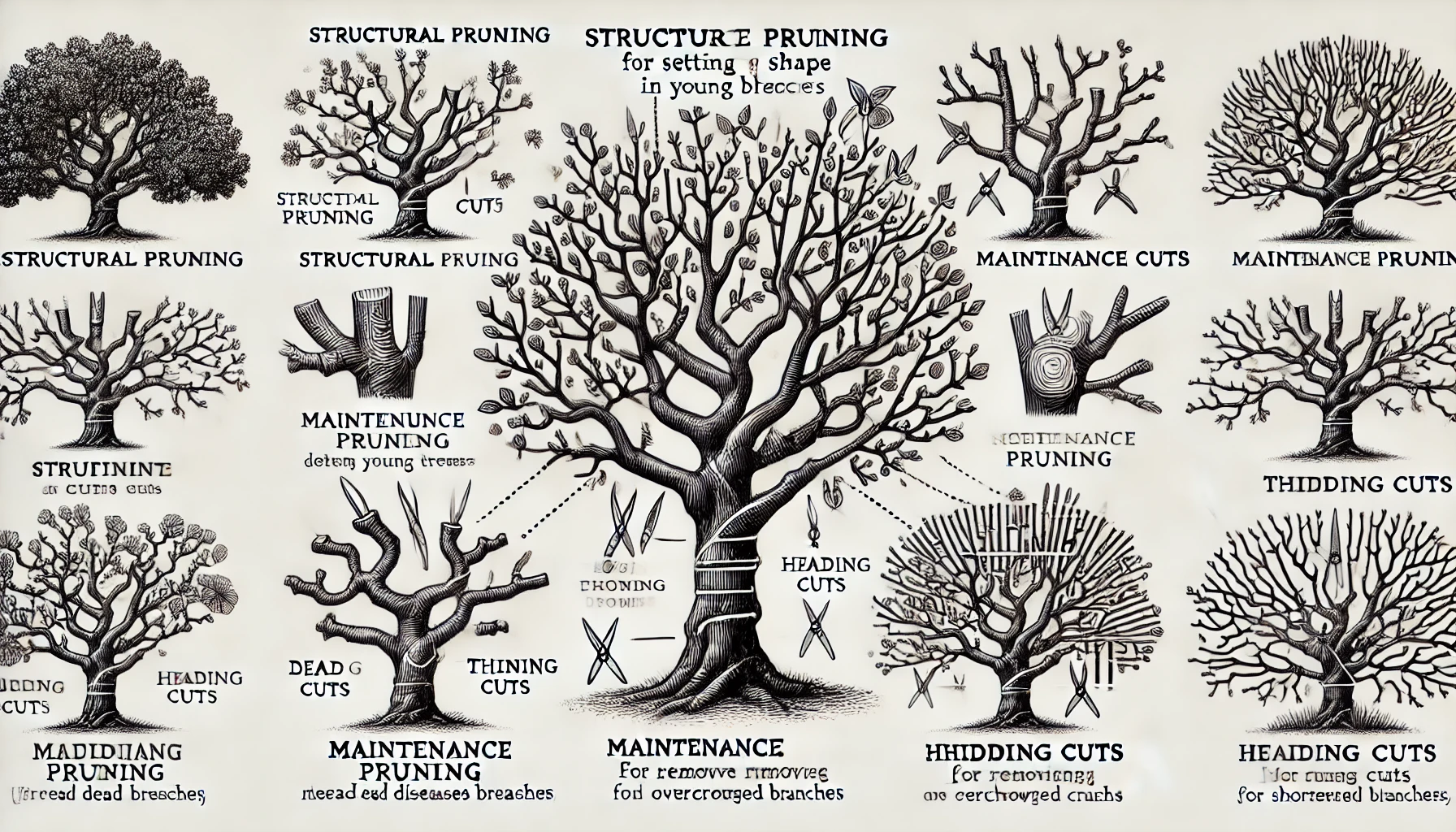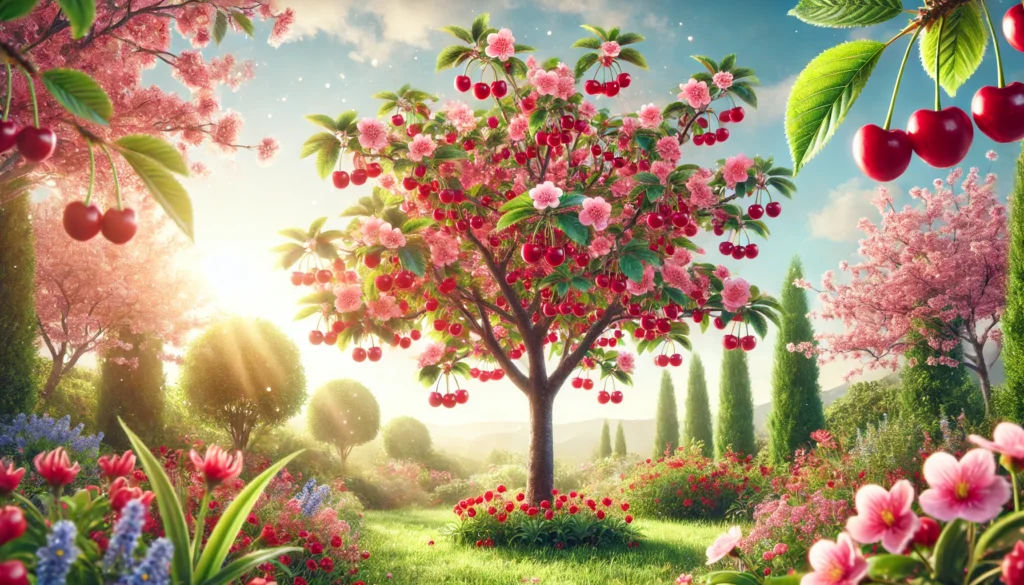
The Best Time to Prune Your Cherry Tree for Maximum Growth: A Seasonal Pruning Guide
Pruning might seem like a simple gardening chore, but knowing the best time to prune your cherry tree for maximum growth can make a world of difference in the health, productivity, and appearance of your tree. Whether you’re aiming for a bigger harvest, improved shape, or stronger branches, timing is everything. Prune too early or too late, and you risk stunting growth or inviting disease. In this guide, we’ll walk you through the ideal pruning windows, why timing matters, and how to get the most from your cherry tree each season. Let’s set your cherry tree up for success!
Table of Contents
ToggleWhy Pruning Cherry Trees Matters 

Pruning cherry trees is essential for healthy growth, better fruit, and long-term beauty 


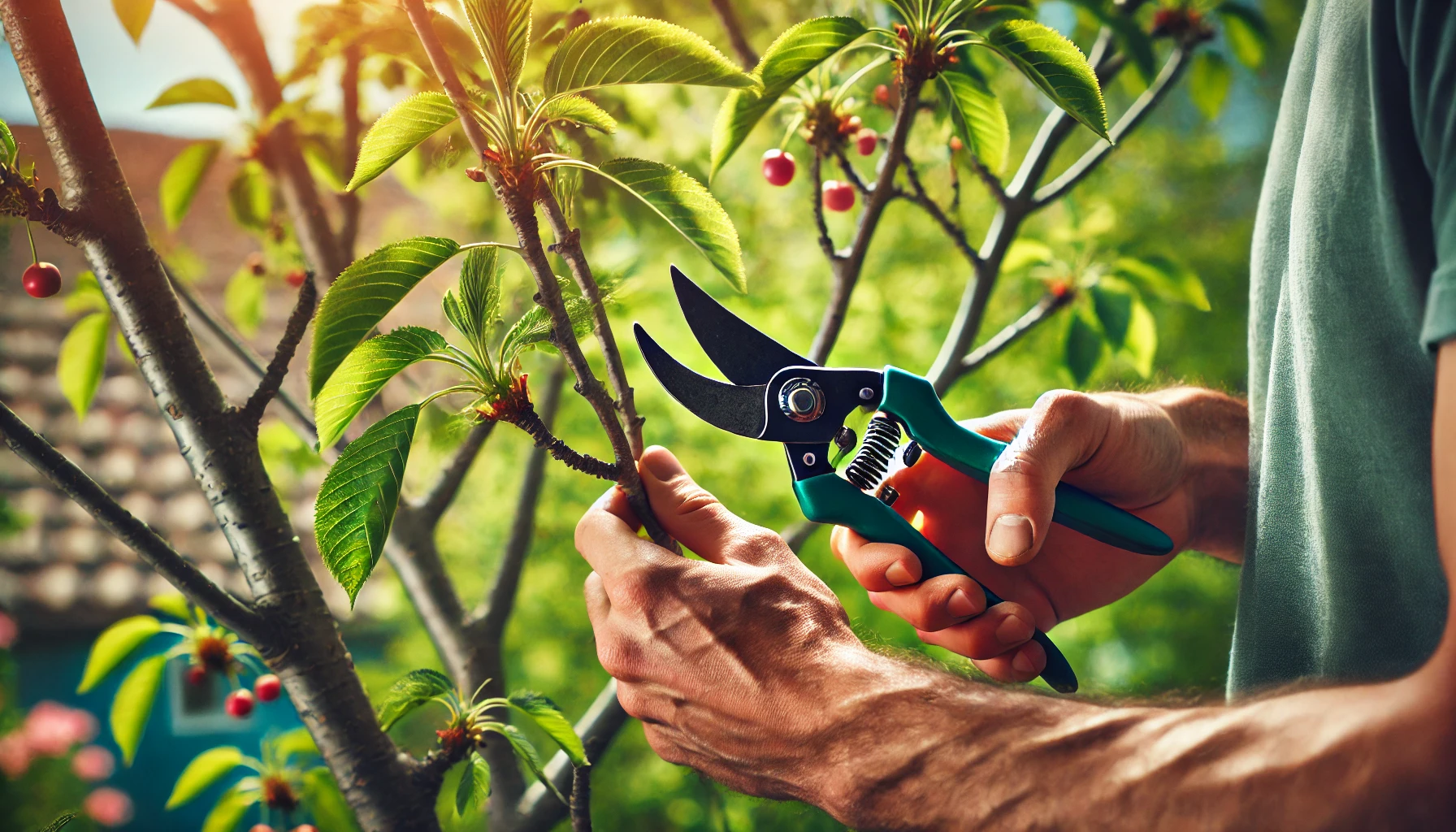
Regular pruning also keeps the tree in shape—literally! 

In short: prune to boost health, fruit, and looks—all at once!
 Understanding Cherry Tree Growth Cycles
Understanding Cherry Tree Growth Cycles
Cherry trees go through distinct growth cycles each year, and knowing them helps you care for your tree at the right time. Here’s a simple breakdown of what to expect 
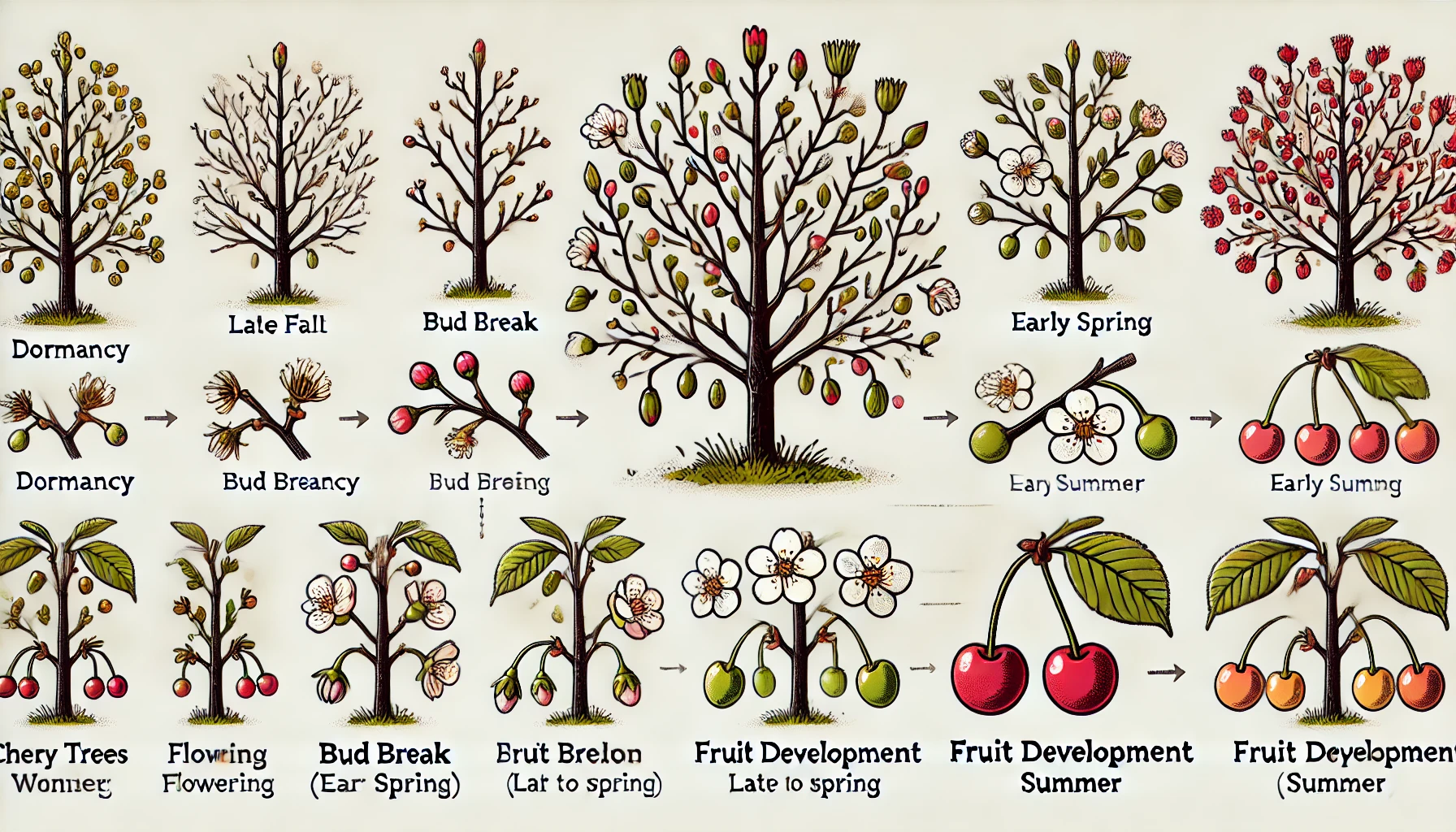

- The tree rests during cold months.
- Leaves fall and growth stops.
- Important to prune during this phase.
Bud Break (Early Spring)
- Buds begin to swell and open.
- First signs of new leaves and flowers appear.
- Time to apply balanced fertilizer and ensure soil moisture.
Flowering (Mid to Late Spring)
- Beautiful cherry blossoms bloom
.
- Flowers attract pollinators.
- Avoid heavy watering—roots prefer slightly dry soil now.
Fruit Development (Late Spring to Early Summer)
- After petals drop, tiny green fruits begin to form.
- Needs consistent watering and nutrients during this time.
Fruit Ripening (Summer)
- Cherries mature and change color (red, yellow, or black).
- Pick fruit when fully ripe and sweet.
- Keep an eye out for birds and pests!
Pre-Dormancy (Late Summer to Fall)
- Growth slows down.
- Leaves turn color and eventually fall.
- Stop fertilizing and prepare tree for dormancy.
Understanding these cycles helps you support your cherry tree’s health and get the best fruit yields year after year!
 The Best Time to Prune Your Cherry Tree for Maximum Growth
The Best Time to Prune Your Cherry Tree for Maximum Growth
Pruning your cherry tree at the right time 

- The ideal time to prune cherry trees is in late winter or early spring, just before new buds begin to swell (typically February to early March, depending on your climate).
- During this dormant phase, the tree is less vulnerable to stress, and pruning wounds heal faster.
- This timing encourages vigorous growth in the upcoming season
.
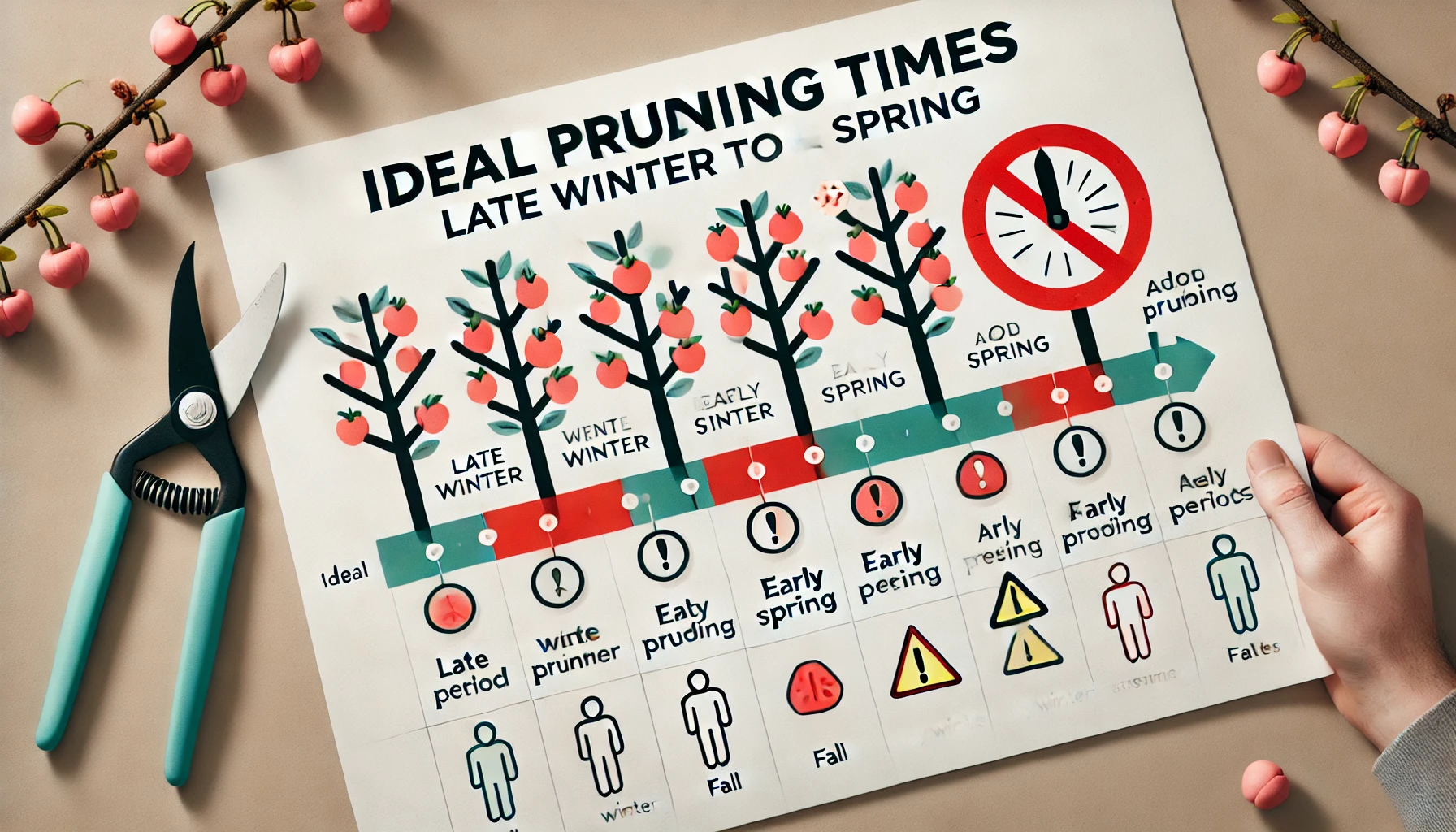

- Pruning too early can cause fresh cuts to become damaged by frost
.
- Late-season pruning may also stimulate new growth that won’t survive winter, weakening the tree.

- If needed, light pruning can be done in summer to remove dead or crossing branches or to control height.
- Do not prune heavily during this time as it may reduce fruit yield and stress the tree.


Best: Late winter to early spring
Okay: Mid-summer (light only)
Avoid: Fall and early winter
Perfect timing = healthier tree + sweeter cherries 
Types of Pruning for Cherry Trees
Pruning your cherry tree the right way is key to healthier growth, better fruiting, and a strong structure. 
1.  Structural Pruning (Formative Pruning)
Structural Pruning (Formative Pruning)
Best for young trees (1–3 years old). This sets up the tree’s shape for long-term health and productivity.
- Goal: Build a strong central leader or open vase form.
- Time: Late winter to early spring, before buds break.
2.  Maintenance Pruning
Maintenance Pruning
This keeps mature trees healthy by removing problem areas.
- Remove: Dead, diseased, or crossing branches.
- Improve: Airflow and sunlight penetration
- Time: Late summer or post-harvest (cherry trees are prone to disease if pruned in winter).
3.  Fruiting Spur Pruning
Fruiting Spur Pruning
Encourages better fruit production.
- Focus on shortening lateral shoots to encourage more fruit spurs.
- Avoid cutting off too many fruiting branches.
4.  Thinning Cuts
Thinning Cuts
Used to reduce overcrowding.
- Remove branches entirely back to the trunk or a main limb.
- Helps light reach inner branches for sweeter cherries!
5.  Heading Cuts
Heading Cuts
Shortens branches to promote bushier growth.
- Use sparingly—too much can lead to weak growth and fewer fruits.
6.  Renewal Pruning (Rejuvenation)
Renewal Pruning (Rejuvenation)
For old, overgrown trees.
- Remove 1/3 of old wood annually over 2–3 years.
- Encourages new, productive growth.


When NOT to Prune Cherry Trees 

Knowing when not to prune cherry trees is just as important as knowing when to do it. Timing matters — pruning at the wrong time can lead to poor growth, disease, and reduced fruiting.

Pruning in fall can encourage new growth just before winter. This tender growth often gets damaged by frost 

Cherry trees are prone to fungal diseases like silver leaf. Never prune during wet or rainy days 

Pruning when your tree is in full bloom 

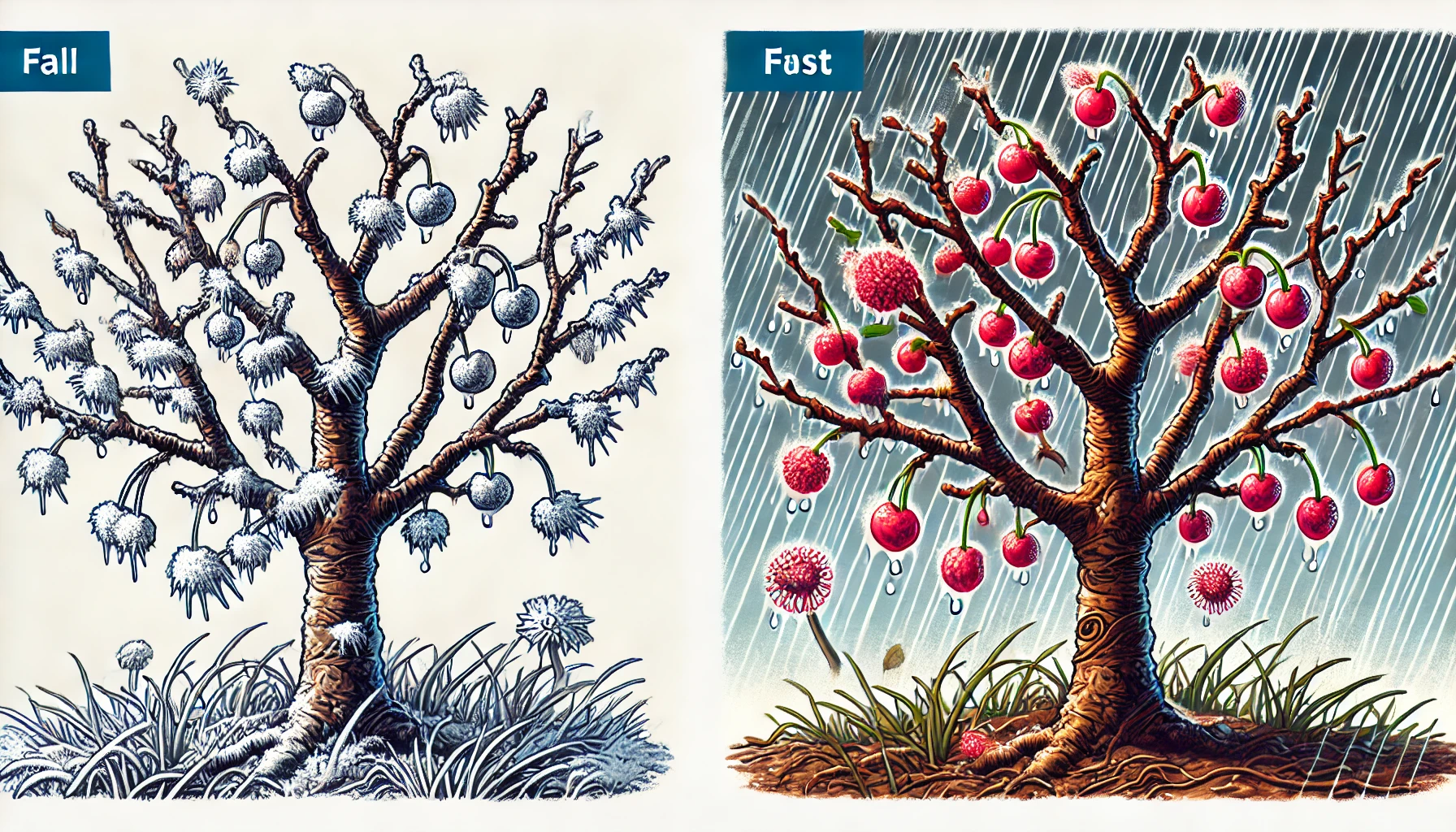

Avoid pruning in deep winter when the tree is fully dormant and temperatures are freezing. Cuts won’t heal properly, and branches may suffer frost damage.

Late summer to early fall for sweet cherry trees. Late winter to early spring for sour cherry trees — but always after the last frost.

Step-by-Step Seasonal Pruning Guide 

Proper pruning at the right time of year helps your plant grow stronger, bloom better, and stay healthy. Here’s a simple seasonal pruning guide you can follow year-round:
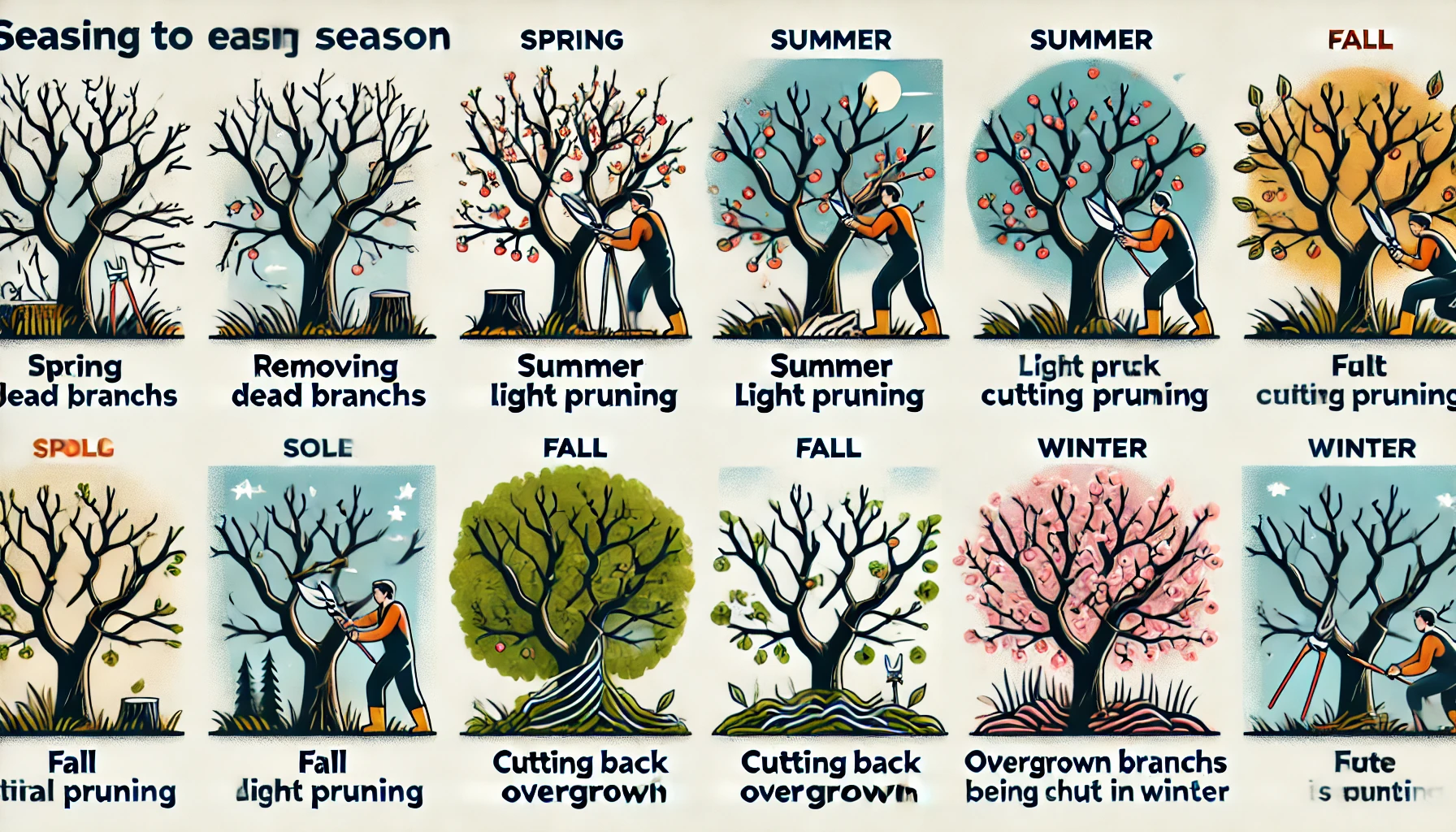
























Pruning at the right season = healthier growth + more blooms!
Post-Pruning Tree Care 
Taking care of your tree after pruning is just as important as the cut itself. Here’s how to ensure your tree stays healthy and thrives post-trim:

Remove all cut branches, leaves, and sawdust from around the base. This helps prevent pests, fungi, and disease.

Keep your tree hydrated, especially during dry spells. Newly pruned trees need consistent moisture to recover—deep watering is best.


Hold off on fertilizing for 4–6 weeks. Too much nitrogen can stress the tree while it’s healing.

Let nature do its job! Most trees heal better when cuts are left open to air. Sealants can trap moisture and cause decay.

Check the pruned areas regularly for signs of insects, fungus, or unusual growth. Early detection helps protect the whole tree.

Add 2–3 inches of organic mulch around the base—keeping it a few inches away from the trunk. This keeps roots moist and cool.

Recovery takes time. As long as the tree is watered and monitored, new growth will come in strong and healthy.
Want help crafting this into a full post or infographic?
Common Mistakes to Avoid 
Growing plants can be a rewarding experience, but it’s easy to make mistakes. Here are some common pitfalls to avoid when caring for your plants:
- Overwatering
One of the most common mistakes is overwatering. It’s easy to think plants need a lot of water, but too much can drown their roots. Always check the soil’s moisture level before watering.

- Ignoring Light Requirements
Every plant has specific light needs. Some thrive in full sun, while others do better in shade. Make sure to place your plant where it will receive the right amount of light for optimal growth. - Improper Potting
Using a pot that’s too small or lacks drainage holes can suffocate your plant’s roots. Always choose the right pot size and make sure it has proper drainage. - Not Using Fertilizer Regularly
Plants need nutrients to grow strong and healthy. Neglecting to fertilize regularly can stunt their growth. Use a balanced fertilizer, but be careful not to overdo it. - Neglecting to Prune
Regular pruning helps plants grow better and prevents disease. Trim dead or yellowing leaves and spent flowers to encourage fresh growth. - Temperature Stress
Many plants are sensitive to temperature fluctuations. Avoid placing your plants in areas with drafts, heaters, or air conditioners that could cause stress. - Ignoring Pests
Pests can sneak up on your plants. Check regularly for signs of insects or disease, and take action quickly to prevent infestations. - Planting at the Wrong Time of Year
Timing is key for planting. Planting during extreme weather (cold winters or scorching summers) can cause your plant to struggle or die.
Bonus Tips for Encouraging Growth 
Proper Lighting is Key
Ensure your plant gets the right amount of light. Most plants thrive with 6-8 hours of indirect sunlight daily. Too much sun? They might get scorched. Too little? They might become leggy and weak.
Water Wisely
Overwatering can lead to root rot, while underwatering stresses the plant. Always check the soil’s moisture level before watering. Most plants prefer slightly moist soil, not soaked or completely dry.

Fertilize Regularly
A balanced fertilizer every month will give your plant the nutrients it needs to grow strong. During its growing season, this will encourage healthy blooms and vibrant foliage.
Prune Dead Leaves
Regularly trim dead or yellowing leaves to help your plant focus its energy on new growth. This also improves air circulation, reducing the risk of disease.
Repot When Necessary
If your plant has outgrown its pot, it’s time for a repot. A larger pot gives the roots more space to spread, encouraging vigorous growth.
Humidity Boost
For tropical plants, increase humidity by placing a tray of water nearby or using a humidifier. This helps mimic their natural environment and prevents leaf curl.
Mulch to Retain Moisture
Applying mulch around the base of your plant will help keep the soil moist longer, reduce weeds, and provide steady nutrients as it breaks down.
These simple but effective tips will encourage your plant to grow stronger and healthier, ensuring it thrives in your care!
Conclusion:
Pruning your cherry tree at the right time is essential for promoting healthy growth, maximizing fruit production, and maintaining the overall strength of the tree. By understanding the best time to prune your cherry tree for maximum growth, you can ensure that your tree thrives through each season. Pruning during the dormant period, ideally in late winter or early spring, is the most effective way to encourage strong branches and improve the tree’s shape and structure.

Remember, proper timing and technique are key to avoiding damage and disease. Whether you’re just starting with young trees or maintaining a mature one, following these seasonal guidelines will help you cultivate a thriving cherry tree for years to come.
Now that you know when and how to prune, go ahead and give your cherry tree the care it deserves – your future harvests will thank you!
Frequently Asked Questions(FAQ)
When is the best time to prune a cherry tree?
The best time to prune your cherry tree for maximum growth is during its dormant season, typically in late winter or early spring. This period allows the tree to heal faster and reduces the risk of diseases.
Can I prune my cherry tree in the summer?
While it’s not ideal to prune cherry trees in the summer, light pruning to remove dead or damaged branches can be done. However, avoid heavy pruning as it may stress the tree during its growing season.
Should I prune my cherry tree before or after it blooms?
Pruning should be done before the tree begins to bloom. This allows the tree to focus its energy on producing flowers and fruit rather than recovering from pruning cuts.
What are the benefits of pruning cherry trees in the winter?
Pruning in winter helps to remove dead or damaged branches, shape the tree, and improve air circulation. It also prevents the spread of diseases and promotes healthier, stronger growth in the spring.
Can pruning too early harm my cherry tree?
Pruning too early, especially during extreme cold spells, can harm your tree. It’s important to wait until the risk of frost has passed to avoid damaging the branches.
How often should I prune my cherry tree?
Cherry trees should be pruned annually, especially when young, to shape the tree and remove any weak or crossing branches. As the tree matures, pruning can be done every couple of years, focusing on maintaining its structure and health.
What tools do I need to prune my cherry tree effectively?
For effective pruning, use sharp pruning shears for small branches, loppers for thicker branches, and a pruning saw for larger limbs. Make sure all tools are clean and sterilized to avoid transferring diseases.
How do I prune cherry trees for maximum growth?
Focus on removing dead, diseased, or broken branches first. Then, shape the tree by cutting back overly long branches and ensuring a balanced structure. Avoid cutting too much at once and always make clean cuts at the correct angles.



